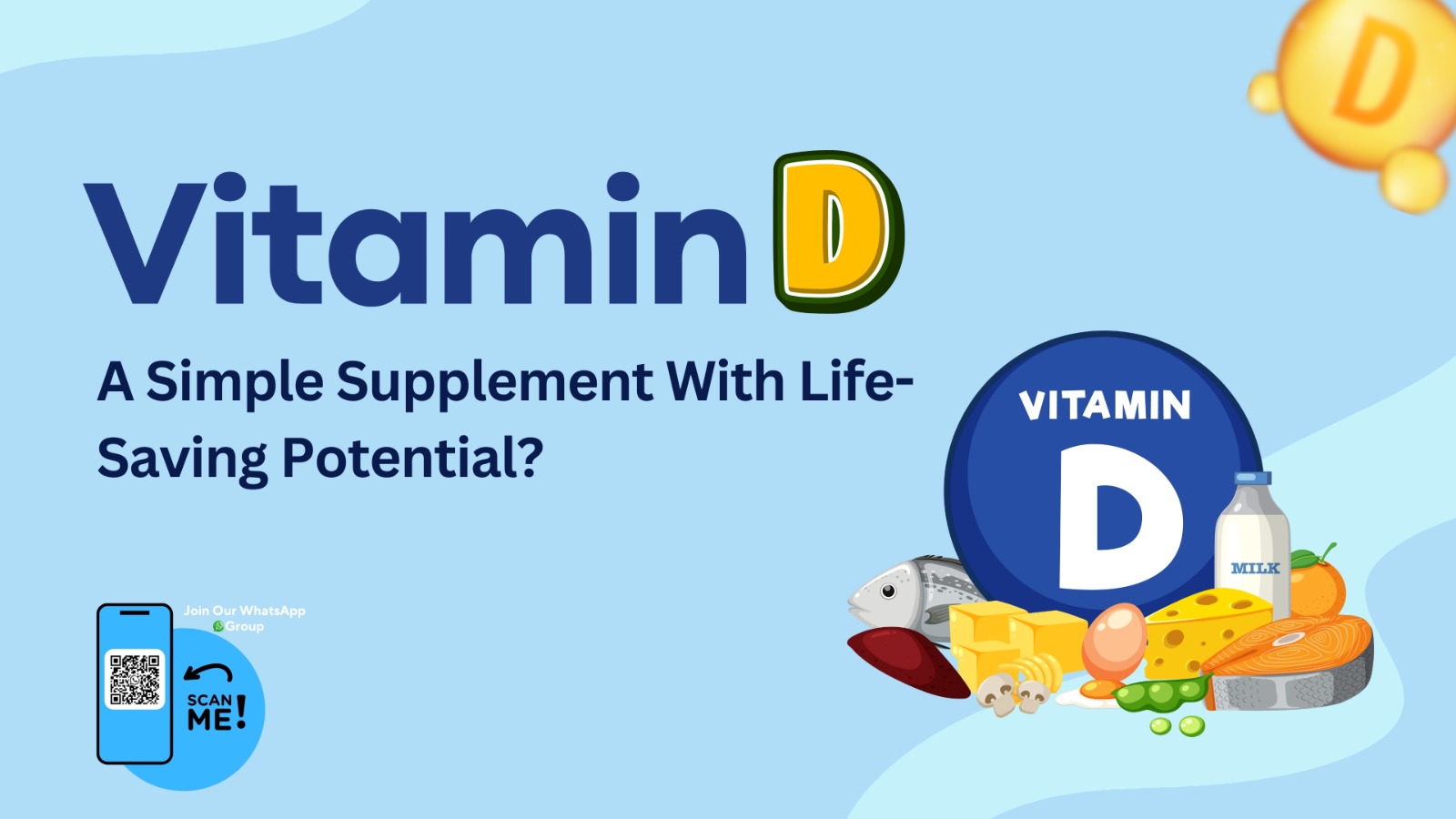Vitamin D: A Simple Supplement With Life-Saving Potential?
Written By: Dr. Janhvi Ajmera

When we think of vitamin D, we usually picture it helping us absorb calcium and keep our bones strong. But what if we told you that this humble vitamin might also reduce your risk of type 2 diabetes, self-harm, and even melanoma?
Recent studies are shedding light on vitamin D’s potential far beyond bone health, and the findings are surprising. Here’s what you need to know (and possibly rethink) about vitamin D.
1. Can Vitamin D Help Prevent Diabetes?
A large clinical trial recently looked at people with prediabetes to see if vitamin D could help delay or prevent type 2 diabetes. The result? It worked modestly.
Those who took vitamin D had a 3.3% lower risk of developing diabetes compared to those on inactive drugs.
While that might sound small, applied to the global prediabetes population, it could delay diabetes in over 10 million people.
But to get this benefit, vitamin D blood levels need to reach about 50–60 ng/mL (125–150 nmol/L), which is near the upper safety limit. That means standard doses (400–800 IU/day) might not be enough for everyone. In some cases, higher doses (up to 4000 IU/day) may be needed, especially under medical supervision to avoid risks like high calcium levels or kidney stones.
Clinical Tip: If your patient has prediabetes and low vitamin D levels, it’s worth considering supplementation as part of a broader lifestyle plan.
2. A Potential Tool Against Suicide and Self-Harm
This one’s hard to ignore.
A retrospective study of over 1.3 million U.S. veterans with vitamin D deficiency showed something remarkable:
- Cholecalciferol (Vitamin D₃) supplementation cut suicide and self-harm rates from 0.36% to 0.20 , a 45% reduction.
- Ergocalciferol (Vitamin D₂) showed similar results — a 49% reduction.
- The most dramatic effect? Among Black veterans who received D₃: there’s 64% drop in suicide and self-harm risk.
While this doesn’t prove cause and effect (more trials are needed), it’s a signal that correcting vitamin D deficiency might impact mental health.
Takeaway for clinicians:
In patients with mood disorders and documented vitamin D deficiency, supplementation may be more than just supportive, rather it could be protective.
3. Vitamin D and Melanoma Risk: A Surprising Link
In a Finnish study of about 500 people, researchers found that regular vitamin D users were 55% less likely to develop malignant melanoma compared to those who used it occasionally or not at all.
Even after adjusting for skin type, sun exposure, and other variables, the link held strong.
Is it definitive? Not yet. But vitamin D may play a protective role against certain cancers, particularly skin cancers.
Watch this space:
More studies are needed, but this opens the door to new discussions about prevention and supplementation.
4. Why Your Weight Might Affect Vitamin D’s Power
In the VITAL trial, researchers gave 2000 IU/day of vitamin D to a large group of older adults to see if it could reduce cancer and heart disease. The results? No benefit across the board.
But when they looked closer at participants with a BMI under 25, things got interesting:
- 24% lower cancer incidence
- 42% lower cancer mortality
- 22% less chances of autoimmune diseases
This suggests that obesity may dull vitamin D’s effects, likely due to the vitamin being stored in fat tissue and not circulating where it’s needed.
For clinicians:
Consider adjusting vitamin D dosing based on BMI. What works for a lean adult may not work for someone with higher adiposity.
So, What Should Medical Professionals Do With All This?
- Don’t overlook vitamin D in chronic disease prevention. From diabetes to depression and even cancer, the evidence is growing.
- Test and tailor. Check levels in at-risk patients (especially those with prediabetes, obesity, or mood disorders) and consider appropriate dosing, sometimes beyond the RDA, but always within safe limits.
- Rethink “normal.” A level of 30 ng/mL might not be enough for disease prevention. Some benefits emerge closer to 50–60 ng/mL.
- Make it part of the conversation. Especially in mental health, metabolic health, and preventive care.
For USMLE & Research Students
If you’re preparing for boards or digging into research, this is a perfect example of how one nutrient intersects with endocrinology, psychiatry, oncology, and public health. Think about how you’d frame this in a clinical description or what research question you could ask based on these findings.
What’s Next?
- Clinical trials to confirm effects on suicide prevention and cancer
- Deeper understanding of vitamin D’s role in the immune system
- Personalized dosing based on BMI, race, and genetic factors
Final Thoughts
Vitamin D isn’t a miracle drug. But it might just be one of the most underestimated tools in your clinical toolkit. Affordable, accessible, and (when used wisely) safe- It’s time we start thinking of it as more than just a bone-builder.
Reference:
https://www.medpagetoday.com/endocrinology/diabetes/102980?trw=yes&hr=kmd
